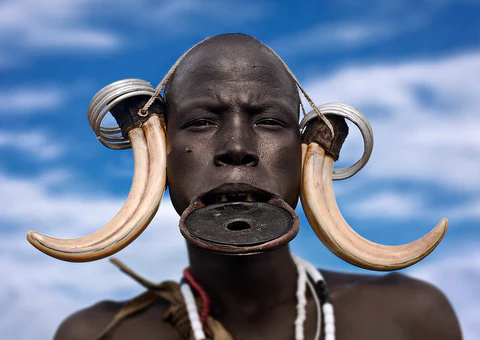prekforalldc.org – Piercings have been a part of human culture for thousands of years, serving various roles from rites of passage to statements of fashion. Here’s a look at the history of piercings across different cultures and their significance.
1. Ancient Egypt
In ancient Egypt, piercings were a symbol of wealth and status. Both men and women adorned themselves with earrings, although only Pharaohs were permitted to have navel piercings. This exclusive piercing was seen as a mark of royalty.
2. Indigenous Tribes of Africa
Various African tribes have used piercings as a form of identity and beauty. Lip and ear piercings are common, often stretching the skin with large plates or plugs. These modifications can signify tribal affiliation, social status, or milestones in one’s life.
3. The Indian Subcontinent
Nose piercings have been a significant cultural practice in India for centuries. Introduced by the Mughals in the 16th century, nose piercings are often associated with marriage and fertility. They are typically worn on the left nostril, believed to ease childbirth pain.
4. Native American Cultures
Among Native American tribes, piercings were used in spiritual ceremonies and rites of passage. Ear and septum piercings were particularly prominent, with jewelry often made from natural materials like bone and wood.
5. The Pacific Islands
In the Pacific Islands, such as Hawaii and Samoa, piercings serve as cultural expressions and spiritual symbols. Ear and nose piercings are common, and tattoos often accompany them, representing family lineage and personal achievements.
6. Ancient Rome and Greece
In ancient Rome and Greece, piercings were less common but still present. Roman soldiers wore nipple piercings as a sign of virility and courage. In contrast, earrings in Greece were primarily decorative, worn by women and symbolizing beauty.
7. The Modern Western World
In the Western world, piercings became popularized in the late 20th century as a form of self-expression and rebellion. The punk movement of the 1970s embraced facial and body piercings as a countercultural statement, a trend that has since evolved into mainstream fashion.
Through these diverse traditions, piercings reflect the rich tapestry of human history, illustrating how different cultures have interpreted and embraced body modification. Whether for spiritual, social, or aesthetic reasons, piercings continue to be a powerful form of personal expression.
